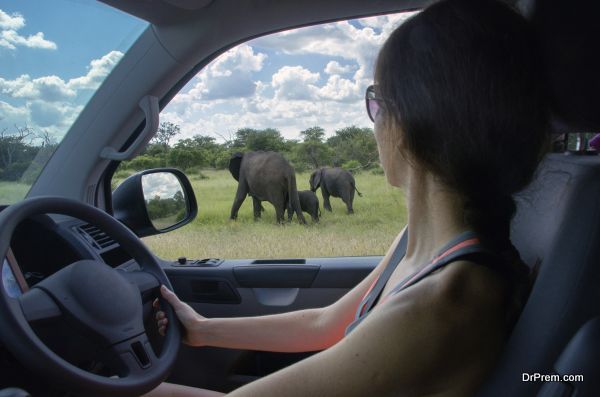Poaching continues to be a rampant exercise in many parts of the world still. Many animals also continue to face extinction due to predators as well. In spite of like minded individuals and organizations doing all they can do save these animals, they continue to face increasing threats from both ends.
However, a series of innovative initiatives in recent days have promised to be of great help in saving endangered wildlife around the world. Here Dr Prem Jagyasi and Team suggests some of these initiatives that could very well make this possible.
Robotic Decoys to Trap Poachers

Several species of deer living in forests around the world face continuous threats from poachers. An initiative that has been adopted by several game and wildlife departments in and around North America can however, give the deer a better chance at survival. These departments are putting to use robotic decoy animals with surveillance to catch poachers hunting deer in off seasons.
The wildlife enforcement officers in these regions make use of remote controls to manipulate life like bears, deer and coyotes in the forests in an attempt to trick poachers into thinking they are real animals. When the poachers shoot, the police ambush and arrest them.
GPS Enabled Text Messages to Reduce Human/Animal Conflict

Cases of human animal conflict wherein the animal wanders into human inhabited zone or vice versa have often led to accidental killings. Researchers have been working to reduce these cases to a minimum and may have very well come up with the perfect solution for the same.
Teaming up with several wildlife protection communities from around the world, these researchers make use of GPS enabled tracking collars with SIM cards and chips to locate animal movements. Embedded in the animal’s skin, these trackers send text messages of its location to researchers.
These messages help the researchers track the animal’s movement and migration patterns. It also alerts officials whenever an animal crosses the geofence and lands on human property, thus warning humans to stay away from it. With this information, researchers believe that they can help reduce human animal conflicts as well as accidental killings to a great extent.
Captive Breeding Programs by Modern Day Noahs aka Zookeepers

Since the establishment of the first every Species Survival Plan (SSP) Program by the Association of Zoos and Aquarium in 1981, a lot of similar SSP programs have been launched with the intent of saving endangered wildlife from extinction. These programs focus on breeding animals like the lowland gorilla, giant panda and the California candor in captivity, ensuring that they get a better chance at survival than if they were out in the wild. These programs have successfully helped several animals get back on the wildlife charts, including an SSP program that was instrumental in breeding African black rhinos in Texas.
DNA Tracing to help stop poachers

A recent initiative by researchers can now help stop elephant poachers in their tracks. These researchers make use of the DNA found in poached tusks and compare it with the DNA found in elephant dung to find out from where the tusks have been poached.
With this critical information made possible by DNA analysis, custom officials can easily find out whether a particular piece of hair or hide has been poached or not, thus landing poachers in deep trouble if they were to get caught with these items.
Cloning Technology to De-Extinct Animals

Interest in cloning tech has been growing substantially for the past few years. Scientists have finally figured out a way to make animals de-extinct by cloning them using preserved genetic materials. Still in the experimental stage, this technology can also help bring back already extinct species of animals with just a strand of their genetic material.
Recent initiatives have helped researchers as well as wildlife enthusiasts conserve a number of endangered species. Making use of GPS enabled trackers, life like decoys, captive breeding, DNA tracing and even cloning, etc. these interesting initiatives can help save a number of animals on the verge of extinction.


